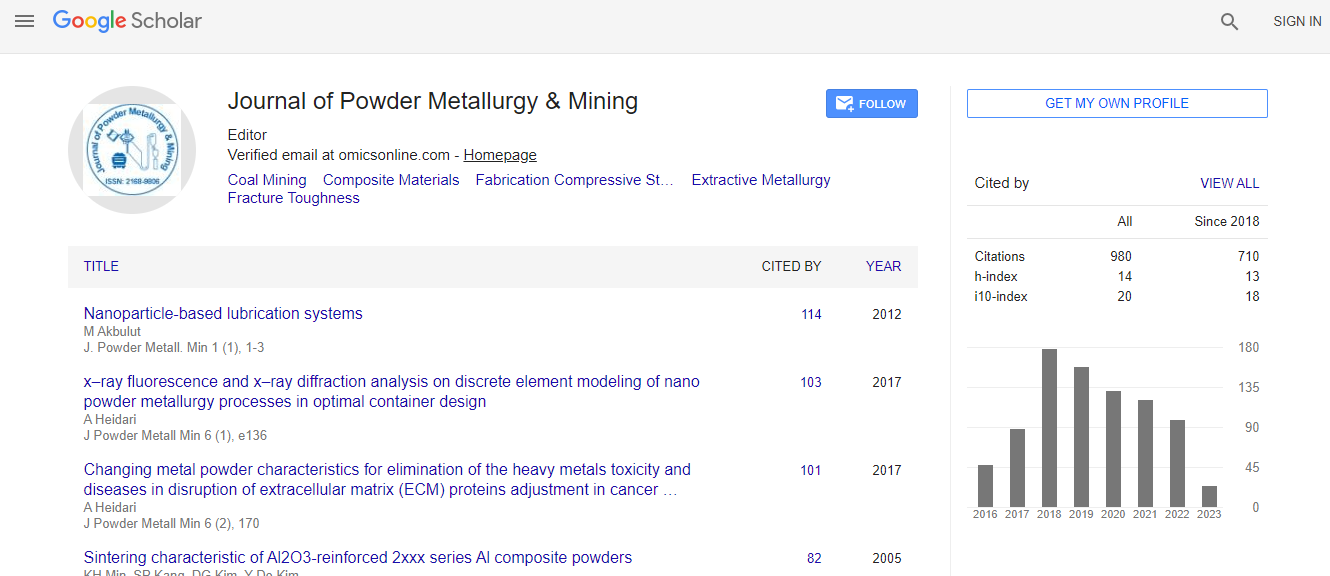Research Article
Contact and Joint Forces Modeling and Simulation of Crawler-formation Interactions
Samuel Frimpong* and Magesh ThiruvengadamMissouri University of Science and Technology, USA
- *Corresponding Author:
- Samuel Frimpong
Professor and Chair Research Assistant Professor
Missouri University of Science and Technology
Rolla, MO 65409, USA
Tel: +573/341-4753
E-mail: rimpong@mst.edu
Received Date: July 29, 2015; Accepted Date: August 26, 2015; Published Date: September 3, 2015
Citation: Frimpong S, Thiruvengadam M (2015) Contact and Joint Forces Modeling and Simulation of Crawler-formation Interactions. J Powder Metall Min 4:135.doi:10.4172/2168-9806.1000135
Copyright: © 2015 Frimpong S, et al. This is an open-access article distributed under the terms of the Creative Commons Attribution License, which permits unrestricted use, distribution, and reproduction in any medium, provided the original author and source are credited.
Abstract
Cable shovels are used in surface mining operations to achieve economic bulk production capacities. The service life of the rawlers and their shoes define shovel reliability, maintainability, availability and efficiency. The crawler track-terrain interaction generates high time-fluctuating contact forces that result in stress buildup, crack and fatigue failure of wler shoes. In addition, the link pins that connect two crawler shoes can exert large fluctuating pin loads on shoe lugding to shoe breakage. This paper addresses fundamental research into contact forces acting on crawler shoes, joint forces generated in the link pin and total deformation of the formation during shovel propel. During propel, the crawler track is controlled by two drive constraints that cause the crawler to follow straight or turning motions. A virtual prototype simulator of the crawler-terrain interaction dynamics is developed and simulated within the MSC ADAMS environment. The simulation results show that the average penetration depth for different crawler shoes is within the range of 5.9 and 6.7 cm for both types of driving constraints. During translation, the maximum magnitude of contact forces along vertical, longitudinal and lateral directions have respective values of 5.9 × 105 N, 5.5 × 105 N and 1.7 × 105 N. During turning, the crawler track experiences varying bouncing and rolling motions causing maximum magnitude of vertical and lateral contact forces on the crawler shoes to increase 1.15 and 1.42 times the maximum translation values. The total deformation of oil sand terrain for the two motions fluctuates between -0.24 and 0.26 cm and between -1.03 and 1.33 cm, respectively. This study provides solid foundation for further studies on dynamic stress and fatigue failure analysis of crawler shoes during shovel propel and loading operations.

 Spanish
Spanish  Chinese
Chinese  Russian
Russian  German
German  French
French  Japanese
Japanese  Portuguese
Portuguese  Hindi
Hindi 

